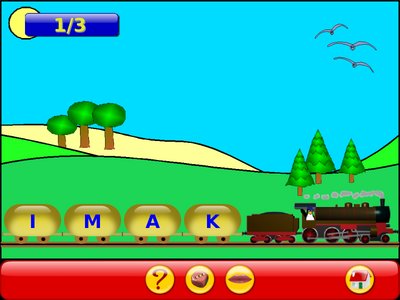Image may be NSFW.
Clik here to view. Learning to read is a complex task. European children surely have it easier than many Asians who need to learn long series of ideograms, yet the association of signs and sounds is often difficult. In particular, English and French are two examples of European languages where children struggle to learn to read.
Learning to read is a complex task. European children surely have it easier than many Asians who need to learn long series of ideograms, yet the association of signs and sounds is often difficult. In particular, English and French are two examples of European languages where children struggle to learn to read.
Clik here to view.
 Learning to read is a complex task. European children surely have it easier than many Asians who need to learn long series of ideograms, yet the association of signs and sounds is often difficult. In particular, English and French are two examples of European languages where children struggle to learn to read.
Learning to read is a complex task. European children surely have it easier than many Asians who need to learn long series of ideograms, yet the association of signs and sounds is often difficult. In particular, English and French are two examples of European languages where children struggle to learn to read.In these two languages, and even more so in English, there are more sounds than available letters, so the language ends up with complex associations of letters to produce sounds, and it is not rare to find letters or associations of letters that are pronounced differently in different words, even though they are written the exact same way.
This has led both English and French teachers of young children to develop new techniques to learn to read, based on recognizing whole words instead of phonemes. English teachers called it 'Look Say' (also known as 'Sight Word' or 'Whole-Word') method, while in France it was called 'Méthode globale'. These methods were used extensively in the 80s, often with very mitigated results. While children were able to read common words, however complicated their phonemes were, they often lacked the skills to decipher words they had not yet learned, and those were many.
The early 21st century has seen a return to reading basics, namely a revival of the 'Phonics' method, widely used before the era of the 'Look Say' last century. It is true that some words eventually have to be learned the global way, but most words can be learned phoneme by phoneme, if the method used is properly set. In the UK, the government has made a set of recommendations as to how this method should be implemented to teach young children to read.
The British editor of children books Usborne produces a series of 15 books called 'Very First Reading' to help children who are just starting to read, introducing letters by sets, as recommended by the DfES Letters and Sounds phonics programe. In the first books of the series, children are simply encouraged to complete the story read by an adult by reading simple words. As the child moves on in the series, the part read by the adult diminishes, until the whole story is read by the child alone.
Image may be NSFW.
Clik here to view. In the open-source world, we have good programs to help children start reading, too. Gcompris is a great example of such programs for young children, and it takes phonics into consideration in its modules.
In the open-source world, we have good programs to help children start reading, too. Gcompris is a great example of such programs for young children, and it takes phonics into consideration in its modules.
Clik here to view.
 In the open-source world, we have good programs to help children start reading, too. Gcompris is a great example of such programs for young children, and it takes phonics into consideration in its modules.
In the open-source world, we have good programs to help children start reading, too. Gcompris is a great example of such programs for young children, and it takes phonics into consideration in its modules.Do you teach your young children to read? What books or methods do you use for this?



